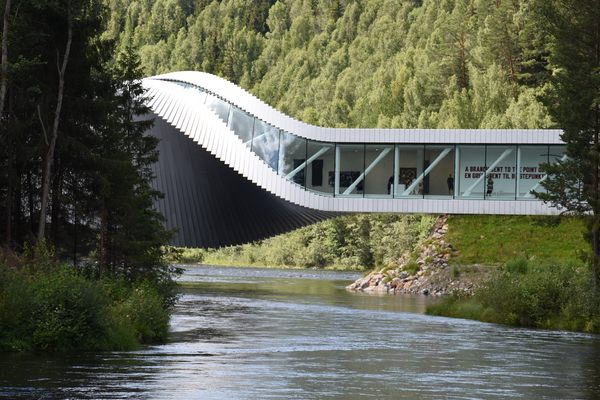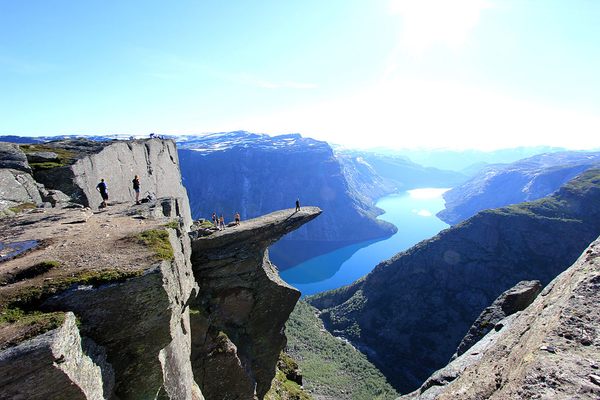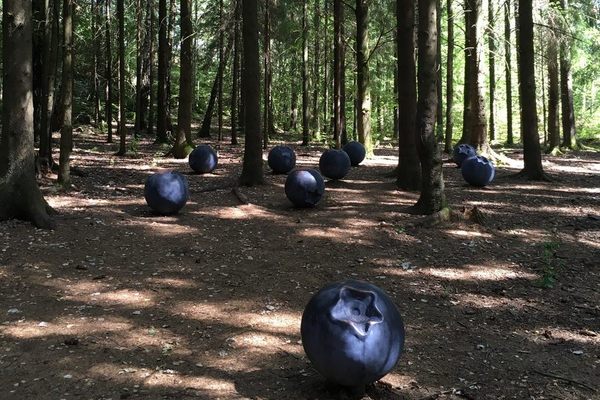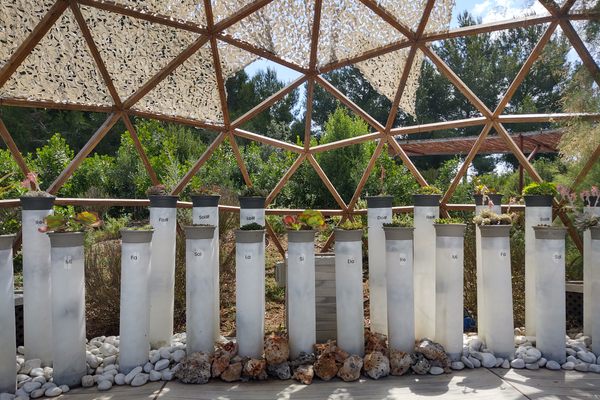AO Edited
Giant Sun Mirrors of Rjukan
For six months of the year, three giant mirrors direct a pool of sunshine onto this otherwise occluded town.
The picturesque town of Rjukan sits in a deep-cut valley between two imposing mountains. It’s pretty, that’s for sure, but for six months of the year Rjukan is cast into shadow, the rays of the sun lingering temptingly on the mountain sides but never reaching the town. But that all changed when one resident decided to illuminate the town square using three giant mountaintop mirrors.
For six months each year, the rays of the sun, blocked by the surrounding mountains, never reach the small town of Rjukan directly. From late September to mid-March, only a gloomy half-light lies over the town during daylight hours. Except, that is, for a strange pool of light on the town square, a spotlight-like circle of sunlight spilling over some 600 square meters and a semi-circle of wooden benches.
This is all thanks to the Solspeilet, or sun mirror, a computer-controlled array of three giant mirrors that direct sunlight down from the mountaintop. Located 1,476 feet above the town, the mirrors are programmed to move with the sun, readjusting every 10 seconds to keep a constant beam of light reflecting down upon Rjukan.
Installed in 2013, the Solspeilet was the idea of Martin Andersen, an artist who had moved to Rjukan in 2002, but soon found the lack of sunlight depressing. He managed to convince local authorities that this pool of pure sunlight was necessary for the townspeople, an idea that wasn’t actually new.
About one hundred years earlier, Sam Eyde, the town’s founder and local leader of industry, also had plans for a sun mirror. Eyde, however, lacked the technology to implement his plan. Instead, he built the Krossobanen, an aerial tramway that could take the residents of Rjukan, most of whom were employees of his Norsk Hydro company, from the town up into the sunlight on the mountains.
Thanks to the sun mirror, however, locals no longer need to ride the Krossobanen 2,670 feet up the mountain to get a dose of sunlight, although the cable car system does still function and remains popular. At first, not all residents were convinced that the sun mirrors were worth the money. The investment cost five million NOK at the time (about $778,000), money that many thought could have been better spent. It was nothing more than a gimmick, some argued, a lot of cash for a little slice of sun.
But many of these critics soon came around when the mirrors helped put Rjukan on the map. The international attention helped provoke a new wave of tourism, and people still visit Rjukan to stand in the light of the Solspeilet.



















Follow us on Twitter to get the latest on the world's hidden wonders.
Like us on Facebook to get the latest on the world's hidden wonders.
Follow us on Twitter Like us on Facebook